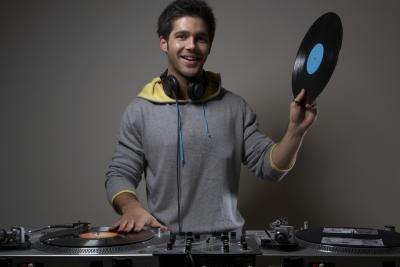ebenzunlimited
Moderator
Put Old School Music On Your PC
You may have decades of favorite music stored on vinyl albums and compact discs, but chances are good you never listen to them anymore. Compared to the button-press convenience of listening to tunes stored on your hard drive or MP3 player, the listening devices that once seemed miracles of technology now are just too much trouble to operate. Liberate the music on your LPs and CDs from the stuffy confines of yesteryear players so that it can blare triumphantly from your modern connected sound system and even your smartphone.
Ripping a CD is easy: you put the disc into your computer's optical drive, launch an audio program like Windows Media Player or iTunes, and copy the tracks to your computer. WinAmp, Phile, CDex, Exact Audio Copy and free:ac (links in Resources) are some other choices for CD-ripping software. During the transfer, the software typically refers to an online database for track information that it includes with the music file: artist name, song title, album title, genre and album art. Check the program settings to be sure you're exporting to a widely-support format like MP3 or FLAC so your music files will be compatible with the largest selection of standalone media players. Windows Media Player and iTunes may default to their proprietary types of WMA or AAC, respectively, which aren't universally playable.
Rip LPs
A turntable with a vinyl record works by placing a sensitive needle into a groove in the record and spinning the record so the needle rides along the groove. To liberate the music stored within the bumps and valleys inside the groove, you'll need to connect the turntable's audio-out connection to the audio-in port of a computer and run a program like Audacity to record the incoming music. A vintage turntable won't have a computer-compatible audio-out jack, most likely; you'll need an adapter or you'll need to use speaker wire and connect your computer through a mixer.
Older turntables were designed to play the music through independently powered speakers, so in some cases you will need a preamp to boost -- or "preamplify" -- the music volume between the record player and the computer; this limitation usually doesn't exist on recently manufactured turntables that ship with RCA or TRS connectors (e.g., red/white plugs or plugs similar to what you'd slip into a smartphone). And while you're playing your records into your computer, don't forget that any ambient noises you make (like singing along to the tunes) can be picked up by the needle -- and could be audible in the digital track.
The groove on each side of a record is one continuous spiral, and there's no automatic means for stopping at the audible pauses between songs. You will need to either monitor the recording session so you can stop manually between tracks, or record the entire LP into a single, massive digital audio file that you later split into chunks. Audacity will segment a file based on the silences between songs. It also includes several filters to smooth out the hisses and pops of a scratched record. Use these with a light hand if at all; they can strip off subtle overtones and undertones of actual music at the same time, leaving you with muddy-sounding audio files.
Encoder Settings
Most digital music is stored in an MP3 file -- a "lossy" file type that compresses the sound in ways almost undetectable to the human ear. MP3s provide a good mix of quality and relatively small file sizes. MP3s may be encoded at different bit rates; in general, the higher the bit rate the more pristine the sound but the larger the file size. There's no "right" bit rate, and the differences can be subtle enough that only an audiophile could hear the difference. In general, though, a variable bit rate of 160 kbit/sec on average is a good lower level. For really important or subtle music, an uncompressed file is even better.
A "lossless" file type -- like FLAC or Windows Media Audio Lossless -- doesn't compress the original data, so it's the purest expression of the original source. Lossless files tend to be larger, and depending on the file type, not all players can handle them as easily as the ubiquitous MP3.
Programs like iTunes or Windows Media Player will rip CDs but the codec, or the rules for encoding and decoding the digital stream, may not be optimal. Choose a well-regarded audio codec, like LAME, if you have the choice.
Copyright Considerations
The owner of a legally purchased CD or LP owns a license to play and use that music. In general, it's permissible to make a copy solely for your own use. If you do rip your entire collection to MP3, it's technically a copyright infringement to sell the CDs or LPs to another person, or to donate them for resale. It's also an infringement if you share your new MP3s with others or make them available for others to download.
Your risk of being caught and punished is slim, but some people do get sued for sharing digital music. In 2009, for example, the Recording Industry Association of America successfully sued a file sharer and won a $675,000 judgment. Resist the temptation to be the next poster child for huge civil damages for file sharing.